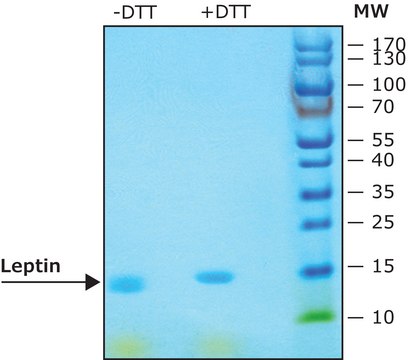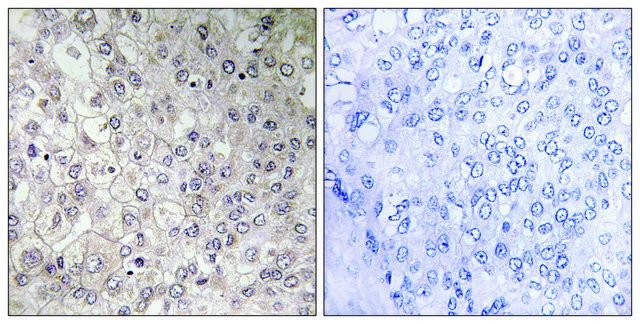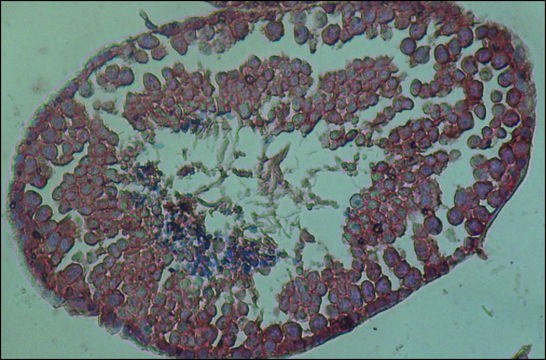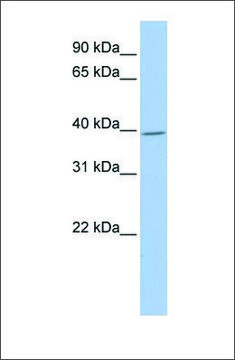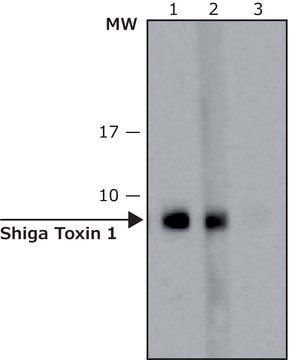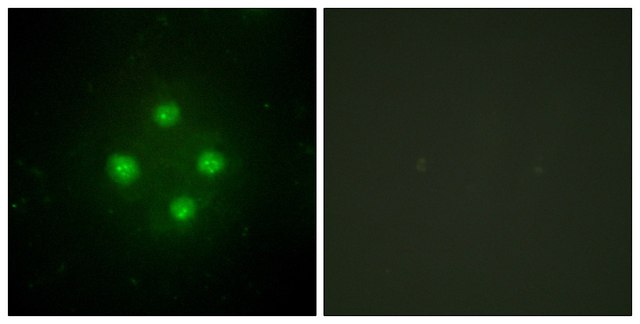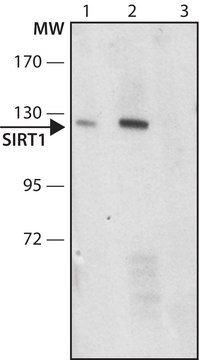SAB4503289
Anti-GPR101 antibody produced in rabbit
affinity isolated antibody
Sign Into View Organizational & Contract Pricing
All Photos(2)
Synonym(s):
GPR101, Probable G-protein coupled receptor 101
UNSPSC Code:
12352203
NACRES:
NA.41
Recommended Products
biological source
rabbit
Quality Level
conjugate
unconjugated
antibody form
affinity isolated antibody
antibody product type
primary antibodies
clone
polyclonal
form
buffered aqueous solution
mol wt
antigen 56 kDa
species reactivity
human, mouse
concentration
~1 mg/mL
technique(s)
ELISA: 1:1000
immunofluorescence: 1:100-1:500
western blot: 1:500-1:1000
NCBI accession no.
UniProt accession no.
shipped in
wet ice
storage temp.
−20°C
target post-translational modification
unmodified
Gene Information
human ... GPR101(83550)
General description
Anti-GPR101 Antibody detects endogenous levels of total GPR101 protein.
G protein-coupled receptor 101 (GPR101) codes for an an orphan G protein-coupled receptor. It is expressed at high level in the hypothalamus. The GPR101 gene is mapped to human chromosome Xq26.3.
Immunogen
The antiserum was produced against synthesized peptide derived from human GPR101.
Immunogen Range: 451-500
Immunogen Range: 451-500
Biochem/physiol Actions
Mutation in G protein-coupled receptor 101 (GPR101) gene result in acromegaly. The GPR101 protein is expected to play an important role in hypothalamic control of energy homeostasis. Duplication of the GPR101 gene leads to X-linked acrogigantism (XLAG).
Features and Benefits
Evaluate our antibodies with complete peace of mind. If the antibody does not perform in your application, we will issue a full credit or replacement antibody. Learn more.
Physical form
Rabbit IgG in phosphate buffered saline (without Mg2+ and Ca2+), pH 7.4, 150mM NaCl, 0.02% sodium azide and 50% glycerol.
Disclaimer
Unless otherwise stated in our catalog or other company documentation accompanying the product(s), our products are intended for research use only and are not to be used for any other purpose, which includes but is not limited to, unauthorized commercial uses, in vitro diagnostic uses, ex vivo or in vivo therapeutic uses or any type of consumption or application to humans or animals.
WGK
nwg
Flash Point(F)
Not applicable
Flash Point(C)
Not applicable
Regulatory Information
常规特殊物品
Certificates of Analysis (COA)
Search for Certificates of Analysis (COA) by entering the products Lot/Batch Number. Lot and Batch Numbers can be found on a product’s label following the words ‘Lot’ or ‘Batch’.
Already Own This Product?
Find documentation for the products that you have recently purchased in the Document Library.
Germline or somatic GPR101 duplication leads to X-linked acrogigantism: a clinico-pathological and genetic study.
Iacovazzo D, et al.
Acta Neuropathologica Communications, 4(1), 56-56 (2016)
Very low frequency of germline GPR101 genetic variation and no biallelic defects with AIP in a large cohort of patients with sporadic pituitary adenomas.
Lecoq AL, et al.
European Journal of Endocrinology, 174(4), 523-530 (2016)
Fady Hannah-Shmouni et al.
Journal of clinical medicine, 11(8) (2022-04-24)
Overgrowth due to growth hormone (GH) excess affects approximately 10% of patients with neurofibromatosis type 1 (NF1) and optic pathway glioma (OPG). Our aim is to describe the clinical, biochemical, pathological, and genetic features of GH excess in a retrospective
Gigantism: X-linked acrogigantism and GPR101 mutations.
Iacovazzo D and Korbonits M
Growth Hormone & IGF Research, 30-31, 64-69 (2016)
Giampaolo Trivellin et al.
Journal of molecular endocrinology, 57(2), 97-111 (2016-06-11)
We recently showed that Xq26.3 microduplications cause X-linked acrogigantism (X-LAG). X-LAG patients mainly present with growth hormone and prolactin-secreting adenomas and share a minimal duplicated region containing at least four genes. GPR101 was the only gene highly expressed in their
Our team of scientists has experience in all areas of research including Life Science, Material Science, Chemical Synthesis, Chromatography, Analytical and many others.
Contact Technical Service